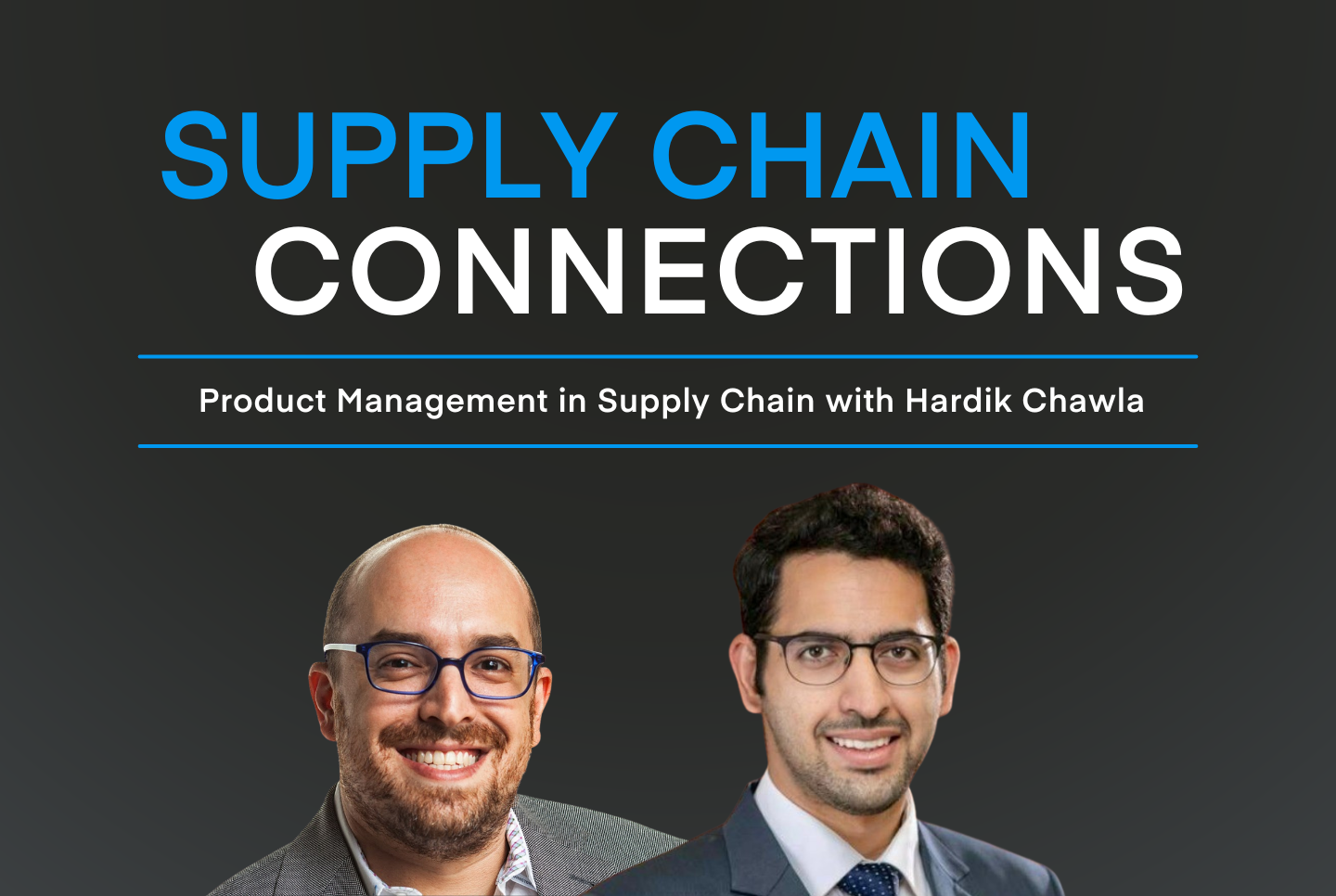Most logistics and supply chain organizations still treat data like a side effect—something that shows up once a shipment is complete or a PO is fulfilled. But the real competitive advantage comes when data becomes a product that drives decisions, improves performance, and creates value across trading partners.
This mindset shift was front and center in a recent conversation between Brian Glick, CEO of Chain.io, and Hardik Chawla, Senior Product Manager at Amazon. While Amazon may operate at a scale most companies can’t match, the principles Hardik shared apply across the industry: treat your data like a product, your vendors like customers, and your integrations like the foundation of your business.
Stop Thinking of Data as a Byproduct
The old model: Data is something you capture after an event—a scanned BOL, a posted invoice, a signed POD.
The new model: Data is an input and an output. It needs to be accurate, timely, accessible, and structured in a way that others can use. That means building systems not just to move freight, but to productize the information that flows with that freight.
If you're still relying on spreadsheets or EDI alone to coordinate with suppliers, carriers, and brokers, you're not just leaving efficiency on the table—you're building blind spots into your operations.
Treat Vendor-Facing Tools Like Customer Products
One of Hardik’s key observations: suppliers are no longer passive participants in your supply chain—they’re users of your ecosystem. That makes your portals, APIs, and workflows products, whether you realize it or not.
If your systems for PO collaboration, shipment tracking, or label generation are hard to use, you’re introducing friction into your own supply chain. And friction leads to bad data, missed SLAs, and strained relationships.
Actionable takeaways:
- Build tools with UX in mind—even if the end user is a warehouse supervisor in another country.
- Offer APIs, but provide real guidance and implementation support.
- Measure success not by portal uptime, but by task completion and data accuracy.
Data Infrastructure Is a Two-Way Street
APIs, not just EDI, are key to productizing your data.
Yes, EDI is still the backbone of many enterprise integrations, but APIs bring lower latency, easier onboarding, and richer data interactions. They also allow you to go beyond compliance and start building collaborative experiences with vendors, not just transactional ones.
Having an API isn’t enough. An API without a clear benefit is just another project. Vendors need to see how using it will reduce costs, save time, or strengthen their relationship with you. That means:
- Making it easier to consume data than to ignore it
- Embedding APIs into workflows, not forcing change management uphill
- Demonstrating how API integrations lower costs or reduce disputes
You’re not just offering tech—you’re offering a faster, cleaner, more resilient way to do business.
Supply Chain Visibility Should be Data You Can Trust
Supply chain visibility is only as good as the data behind it. That means accurate timestamps, consistent SKUs, traceable handoffs, and contextual metadata.
You can’t “optimize” what you can’t trust.
Hardik emphasized that real-time visibility isn’t a luxury—it’s foundational. Without it, predictive models fail, lead times stretch, and exception management becomes the default.
Visibility wins when:
- Your supplier knows the minute something goes wrong
- Your system understands the difference between “late pickup” and “label mismatch”
- Your logistics partners don’t have to ask what happened—just how to respond
Generative AI Needs Good Foundations
AI in logistics is moving fast, but the impact will be limited unless it’s built on quality, contextualized data. Companies are already using GenAI to explain the decisions made by complex ML models—but those models only work because they’re grounded in well-structured operational data.
Before jumping to AI, LSPs and shippers need to:
- Normalize master data across systems
- Ensure structured event tracking (e.g., EPCIS standards)
- Create feedback loops that correct bad data early
This isn’t about “big data.” It’s about “good data.”
Your Data Is a Product. Treat It That Way.
Whether you're an LSP orchestrating hundreds of vendors or a shipper coordinating multiple manufacturing sites, the pattern is clear:
- Your internal systems must produce clean, timely data
- Your external partners must be able to consume and contribute to that data
- The value of your operation is increasingly tied to your ability to orchestrate—not just execute
If your team isn’t thinking about supply chain data like a product—with features, users, use cases, and business outcomes—you’re already behind.
Your next steps:
- Audit your supplier-facing tools: Would you use them if you were the vendor?
- Prioritize API integration that’s paired with enablement—not just documentation
- Invest in real-time visibility, even if it starts with just one lane or partner
- Define ownership of key data sets: Who’s responsible for quality and completeness?
- Start small: Productizing one high-friction workflow (e.g., PO confirmations or ASN generation) can unlock disproportionate gains
Chain.io helps LSPs and shippers take these next steps faster—by turning fragmented data into a usable, productized asset across your supply chain.
Explore the PlatformTalk to Sales
